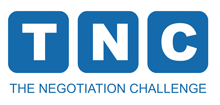Pareto efficiency, also known as Pareto optimality, is a concept in negotiation theory that refers to a situation where it is impossible to make one party better off without making another party worse off. In other words, Pareto efficiency is a state where no further improvements can be made without making someone worse off.
In negotiation, Pareto efficiency is important because it ensures that any agreement reached is the best possible outcome for both parties. If an agreement is not Pareto efficient, then there is always the possibility that one party could be made better off without making the other party worse off.
There are a few ways to achieve Pareto efficiency in negotiation. One is to focus on interests, not positions. Positions are the stated demands of the parties, while interests are the underlying needs and concerns that drive those demands. By focusing on interests, the parties can find solutions that meet both of their needs and that are Pareto efficient. Another way to achieve Pareto efficiency is to brainstorm creative solutions. In negotiation, there is no one right answer. The parties need to be creative and come up with solutions that both parties can agree on.
Pareto efficiency is not always possible to achieve in negotiation. However, by understanding the concept and by using the right strategies, the parties can increase their chances of reaching a Pareto efficient agreement.
Here are some examples of Pareto efficiency in negotiation:
- A seller and a buyer agree on a price for a house that is acceptable to both parties. If the price was the only issue they negotiated, any agreement between the paries’ reservation points is Pareto efficent because it cannot be improved for both of them at the same time.
- A union and a company agree on a contract that includes an adjustment in wages and working hours . A combination of wage adjustment and working hours is Pareto efficient if and only if it is impossible to find another combination of wages and hours that make both parties better off.
In all of these cases, the agreement reached is the best possible outcome for both parties. By understanding the concept of Pareto efficiency, the parties can increase their chances of reaching an agreement that is beneficial to everyone involved.
